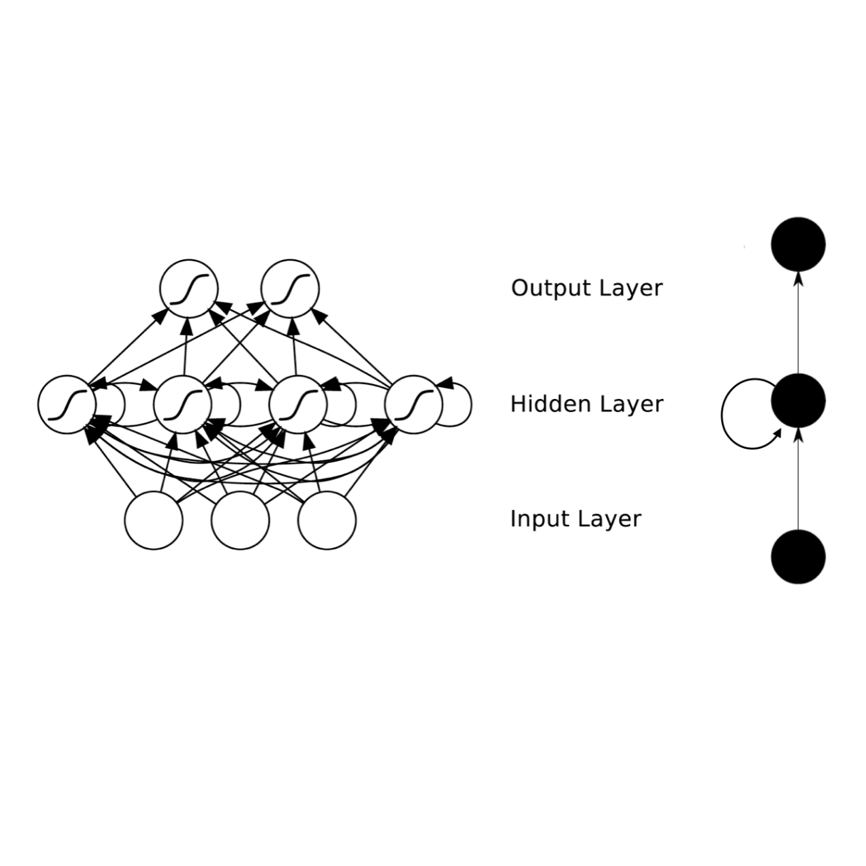We propose a recurrent neural network for a "model-free" simulation of a dynamical system with unknown parameters without prior knowledge. The deep learning model aims to jointly learn the nonlinear time marching operator and the effects of the unknown parameters from a time series dataset. We assume that the time series data set consists of an ensemble of trajectories for a range of the parameters. The learning task is formulated as a statistical inference problem by considering the unknown parameters as random variables. A latent variable is introduced to model the effects of the unknown parameters, and a variational inference method is employed to simultaneously train probabilistic models for the time marching operator and an approximate posterior distribution for the latent variable. Unlike the classical variational inference, where a factorized distribution is used to approximate the posterior, we employ a feedforward neural network supplemented by an encoder recurrent neural network to develop a more flexible probabilistic model. The approximate posterior distribution makes an inference on a trajectory to identify the effects of the unknown parameters. The time marching operator is approximated by a recurrent neural network, which takes a latent state sampled from the approximate posterior distribution as one of the input variables, to compute the time evolution of the probability distribution conditioned on the latent variable. In the numerical experiments, it is shown that the proposed variational inference model makes a more accurate simulation compared to the standard recurrent neural networks. It is found that the proposed deep learning model is capable of correctly identifying the dimensions of the random parameters and learning a representation of complex time series data.
翻译:我们建议一个经常的神经网络,用于“无模型”模拟一个动态系统的“无模型”模拟,该动态系统具有未知的参数,没有事先的知识。深层学习模型旨在共同学习非线性时间行进操作器和时间序列数据集中未知参数的影响。我们假设时间序列数据集由一系列参数的轨迹集合组成。学习任务是一个统计推导问题,方法是将未知参数视为随机变量。引入了一个潜在变量,以模拟未知参数的影响,并使用一种变异推推法方法,同时为时间行进轨操作器和潜值变量的近似远方分布模型培训概率模型模型模型。与古典变异推论不同的是,它使用一个因系数化而分布的元素组合,我们使用一个向上向神经网络反馈的网络,并辅之以一个更灵活的常态常态神经网络,以开发一个更灵活的概率模型模型模型模型模型模型。 近似后天体分布的精确推法在轨迹上得出未知参数的影响。 时间行进模型运行者通过一个可变的模型模型排序模型, 将一个可变的变的变度数据序列排序,从一个可变的变的变的变的变的变度数据从一个可变的变的变的变数, 以一个可变的变的变的变数的变数的变数的变数的变数的变数,从一个可变数的变数的变数的变数的变数的变数的变数的变数网络,从一个变数的变数的变数的变数的变数的变数的变数的变数的变数的变数的变数的变数在一个变数的变数的变数的变数的变数的变数的变数的变数的变数的变数在一个变数的变数的变数的变数的变数的变数的变数的变数的变数的变数,从到的变数的变数的变数的变数的变数的变数的变数的变数的变数的变数的变数的变数的变数的变数的变数的变数的变数的变数。




